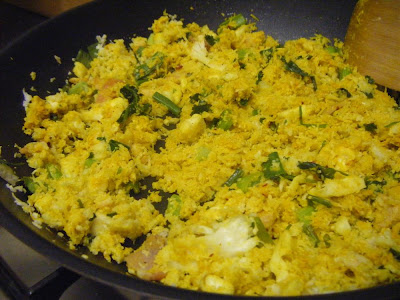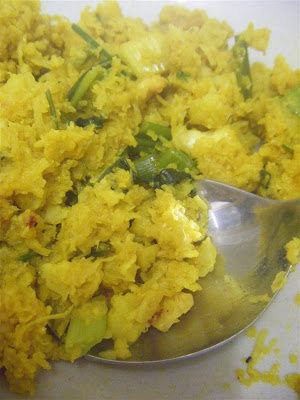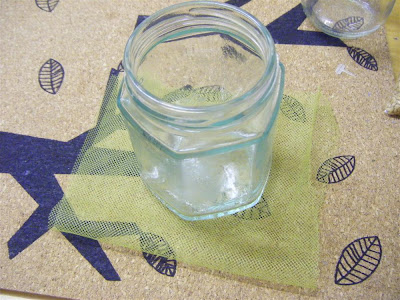Cauliflower and I do not have the closest relationship. In fact, in all honesty, it's probably my least favourite vegetable (unlike the popular sister, broccoli). I have horrible flashbacks of school cauliflower cheese, forming this homogeneous cream slop dished out by dinner ladies. I have visions of these rank microwave steam bags of vegetables full of cauliflower and green beans, my two vegetable enemies. Gross.
But, as with many things in life, it turns out I was wrong.
While looking for something or other, I can't remember what, I stumbled across a site called Nom Nom Paleo, and more specifically, a recipe for Cauliflower Rice. Now I don't really agree with the whole paleo thing, I am definitely not ready for that diet, but if there's a way I can make a vegetable tasty without adding sugar or deep frying it in batter, I am so there. So here's my version of cauliflower rice:
With no food processor, I grated the cauliflower instead, which turns out to be a fantastically efficient way to a) make your kitchen look like a dandruff shampoo advert and b) lose chunks of your fingertips. But it was a surprisingly good arm workout. Maybe this is actually how hippies stay so thin, they just expend a lot of energy prepping their food.
I used spring onions instead of white onion, added in some lil strips of bacon, then added some turmeric, chili flakes and ground cumin, so the end result was vaguely Indian tasting. It was really rather good, to the point where I ate the whole pan-full, which is totally okay because cauliflower only has 31 calories per 100g, compared to white basmatic rice at 349 calories!
Afterwards I was all "oh that was filling" and then realised I'd eaten half a head of cauliflower. So yes, that would be filling.
I also made kale chips. If you want to know what the experience of eating a kale chip is like, go outside and stick your mouth in some dry leaves. They tasted okay, but it was uncomfortably close to eating autumn foliage. Maybe worth a try if you really really like crisps, but are going low carb.
They're very lightweight and have a habit of blowing all over the kitchen.
But that's okay because it's Saturday! And on Saturday my flatmate goes to work in his home town suburb of London, so I can make as much mess and as much noise as I want! Yaaaay!
Out of courtesy I should probably go missing midweek so he gets the same privilege.
...nah.
But, as with many things in life, it turns out I was wrong.
While looking for something or other, I can't remember what, I stumbled across a site called Nom Nom Paleo, and more specifically, a recipe for Cauliflower Rice. Now I don't really agree with the whole paleo thing, I am definitely not ready for that diet, but if there's a way I can make a vegetable tasty without adding sugar or deep frying it in batter, I am so there. So here's my version of cauliflower rice:
With no food processor, I grated the cauliflower instead, which turns out to be a fantastically efficient way to a) make your kitchen look like a dandruff shampoo advert and b) lose chunks of your fingertips. But it was a surprisingly good arm workout. Maybe this is actually how hippies stay so thin, they just expend a lot of energy prepping their food.
I used spring onions instead of white onion, added in some lil strips of bacon, then added some turmeric, chili flakes and ground cumin, so the end result was vaguely Indian tasting. It was really rather good, to the point where I ate the whole pan-full, which is totally okay because cauliflower only has 31 calories per 100g, compared to white basmatic rice at 349 calories!
Afterwards I was all "oh that was filling" and then realised I'd eaten half a head of cauliflower. So yes, that would be filling.
I also made kale chips. If you want to know what the experience of eating a kale chip is like, go outside and stick your mouth in some dry leaves. They tasted okay, but it was uncomfortably close to eating autumn foliage. Maybe worth a try if you really really like crisps, but are going low carb.
They're very lightweight and have a habit of blowing all over the kitchen.
But that's okay because it's Saturday! And on Saturday my flatmate goes to work in his home town suburb of London, so I can make as much mess and as much noise as I want! Yaaaay!
Out of courtesy I should probably go missing midweek so he gets the same privilege.
...nah.



















.JPG)
.JPG)
.JPG)
.JPG)









